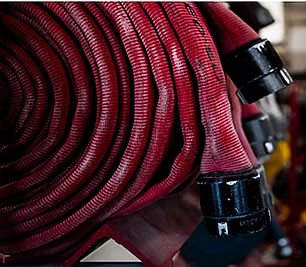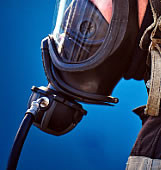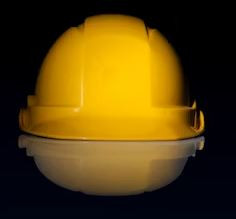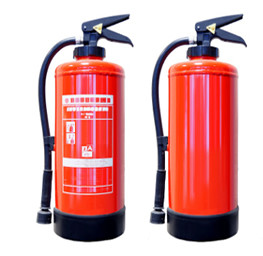Firefighting involves employing various techniques and equipment to control and extinguish fires while safeguarding people and the environment. Its primary aim is to control fire damage while simultaneously saving lives and property - this topic provides an overview of various techniques and equipment utilized during an emergency fire situation.
Firefighting techniques
Different situations and fire types require specific strategies for fighting them; here are a few of the more frequently employed measures:
Different situations and fire types require specific strategies for fighting them; here are a few of the more frequently employed measures:
- Direct attack: A direct attack involves applying water or other extinguishing agents directly onto the burning fuel. The objective is to cool the material below its ignition temperature, thereby extinguishing the fire.
- Indirect attack: In an indirect attack, firefighters aim the water or other extinguishing agents at the ceiling to cool and condense the fire gases. This is usually done in extremely hot and potentially explosive environments.
- Offensive vs. defensive attacks: An offensive attack is aimed at aggressively and directly extinguishing the fire, often conducted inside the burning structure. In contrast, a defensive attack focuses on containing the fire to prevent it from spreading to other areas or structures.
- Ventilation: Ventilation is used to flush away heat, smoke and toxic gases from structures and replace them with fresh air for improved visibility and reduced temperatures for firefighters entering buildings, making it safer and simpler to locate and rescue occupants.
Firefighting equipment
The right tools are crucial in firefighting efforts. Some key pieces of firefighting equipment include:
The right tools are crucial in firefighting efforts. Some key pieces of firefighting equipment include:

Fire hoses and nozzles
These are the primary tools for delivering water or other extinguishing agents to the fire. The hoses vary in diameter and length, while nozzles can be adjusted to control the flow and pattern of the water.
These are the primary tools for delivering water or other extinguishing agents to the fire. The hoses vary in diameter and length, while nozzles can be adjusted to control the flow and pattern of the water.

Breathing apparatus
Firefighters who operate in environments filled with smoke use self-contained breathing apparatus (SCBA). These masks deliver oxygen directly into their lungs for respiration purposes and ensure adequate breathing ventilation.
Firefighters who operate in environments filled with smoke use self-contained breathing apparatus (SCBA). These masks deliver oxygen directly into their lungs for respiration purposes and ensure adequate breathing ventilation.

Personal protective equipment
Firefighters utilize PPE such as helmets, gloves, boots and protective clothing in order to guard themselves against heat, flames and other hazards.
Firefighters utilize PPE such as helmets, gloves, boots and protective clothing in order to guard themselves against heat, flames and other hazards.

Fire extinguishers
These portable devices are used to control or extinguish small fires. Different types of extinguishers (water, foam, dry powder, CO2) are effective against different classes of fire.
These portable devices are used to control or extinguish small fires. Different types of extinguishers (water, foam, dry powder, CO2) are effective against different classes of fire.

Thermal imaging cameras
These devices allow firefighters to see through smoke, identify hotspots, and locate victims, contributing significantly to situational awareness.
These devices allow firefighters to see through smoke, identify hotspots, and locate victims, contributing significantly to situational awareness.
Conclusion
Understanding firefighting techniques and equipment is integral for anyone working in fire safety, as this knowledge can significantly influence the outcomes of emergency fire situations. In the next topic, we'll look at post-fire recovery processes as well as investigation processes.
Understanding firefighting techniques and equipment is integral for anyone working in fire safety, as this knowledge can significantly influence the outcomes of emergency fire situations. In the next topic, we'll look at post-fire recovery processes as well as investigation processes.
More.........
- Learning from Fire Incidents: Case Studies
- Post-Fire Recovery and Investigation
- Fire Safety in Healthcare and Educational Institutions
- Fire Emergency Communication and Coordination
- Fire Safety Compliance and Enforcement
- Fire Risk Assessment Process
- Fire Safety Inspections and Audits
- Fire Safety Systems Integration
- Fire Suppression Systems and Equipment
- Fire Safety in Industrial and Manufacturing Facilities
- International Fire Safety Codes and Practices
- Fire Safety Measures in High-Rise Buildings
- Emergency Evacuation Planning
- Fire Detection and Alarm Systems
- Fire Investigation Techniques and Procedures
- Firefighting Techniques and Equipment
- Fire Safety Planning and Documentation
- Fire Risk Management Strategies
- Fire Safety Legislation
- Fire Prevention Strategies
- Evacuation Techniques and Strategies
- Fire Safety Roles and Responsibilities
- Emergency Response Planning and Procedures
- The Importance of Fire Safety
- Building Construction and Fire Resistance
- Importance of Fire Safety Training
- Fire Safety in Offices and Administrative Buildings
- Fire Safety in Warehouses and Storage Facilities
- Fire Safety Regulations and Standards
- Fire Science and Behavior